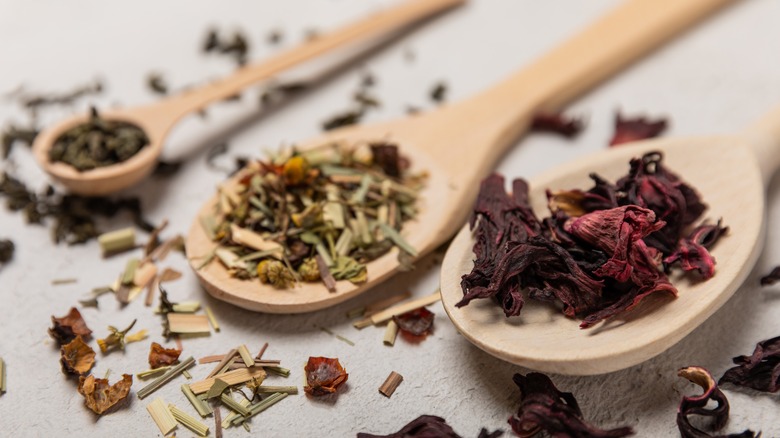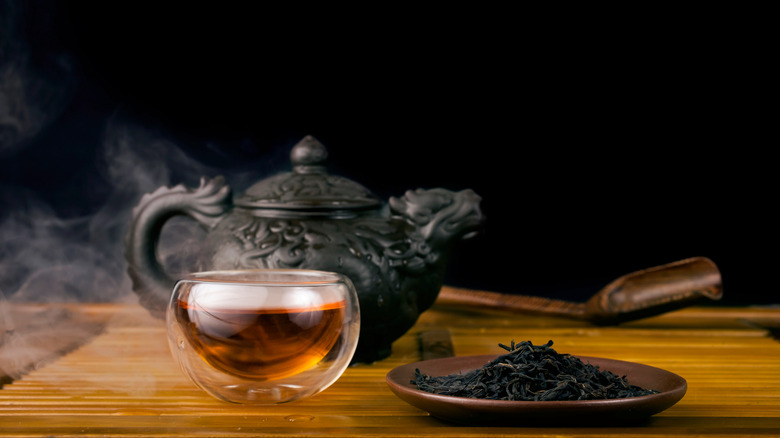The Smoky Chinese Tea You Should Be Adding To Poultry Brines
When it comes to warm, caffeinated beverages, most of us fall squarely into one of two camps: Those who love coffee and those who love tea. According to Statista, that latter group is a pretty enormous one, with worldwide tea consumption lagging only behind water; in the U.S., however, coffee drinkers still outnumber tea drinkers, with 44% of Americans drinking more than two cups of java daily, and only 25% drinking that amount of tea daily (via Zest Tea). But whichever plant product you reach for, we're willing to bet you almost always brew it into a hot drink.
But both coffee and tea have a wide range of culinary uses beyond just the scope of your mug. Coffee, for example, often pairs with chocolate in rich desserts; tea, meanwhile, also shows up in sweets ranging from Earl Gray pie to tea-flecked shortbread pastry. And if you've never thought about using tea in savory dishes, now's the time to consider it because lapsang souchong tea can bring smoky intensity to everything from brined turkey for Thanksgiving to cured salmon perfect for piling onto a bagel.
This smoky tea hails from southeast China
If you're a tea aficionado, you've likely sipped a mug of lapsang souchong, the Chinese tea noted for its smoky flavor. Hailing from the region of Wuyi, according to Ku Cha House of Tea, this black tea was first smoked as the result of warfare: During the last imperial dynasty of China, passing armies interfered with the tea-drying process; as a way to speed it up, producers utilized the heat and smoke of fires — and found that they liked the distinctive smoked flavor it lent the tea.
While the tea's unique flavors can be appreciated in a cup, they're also appealing in foods, where they bring smokiness — without having to actually smoke anything. That's why chef and cookbook author Erin French likes to use the tea in her brine for a Thanksgiving turkey; as she demonstrated on Today, she adds lapsang souchong to a brine with sugar and salt and soaks the bird for up to 36 hours. "It's gonna make it nice and smoky," French comments. Brining the bird — a technique that can be applied to chicken, duck, and other fowl — also helps keep it moist during roasting.
If you've got fish on your mind, rather than poultry, lapsang souchong can work for you, too: Our recipe for tea-cured, center-cut salmon brings a light smokiness to salt- and sugar-cured fish that makes an excellent addition to a leafy salad or a bagel with a schmear.

